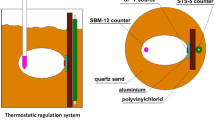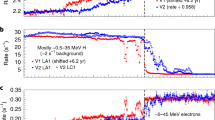Abstract
SINCE the appearance of Nova Herculis in December last year, a number of notes have appeared in various scientific journals dealing with a possible effect of the nova on the intensity of cosmic rays, but the conclusions arrived at by different observers have been rather conflicting. It seems, therefore, desirable to examine as many observations as possible at different places and with different types of apparatus. The data obtained by means of a photographically recording Kolhörster electrometer of the latest type which was kept in continuous action at the Solar Physics Observatory, Cambridge, during the period from February 14 until March 20, appear to confirm Kolhörster's observations made with Geiger-Müller counters.
This is a preview of subscription content, access via your institution
Access options
Subscribe to this journal
Receive 51 print issues and online access
$199.00 per year
only $3.90 per issue
Buy this article
- Purchase on Springer Link
- Instant access to full article PDF
Prices may be subject to local taxes which are calculated during checkout
Similar content being viewed by others
Author information
Authors and Affiliations
Rights and permissions
About this article
Cite this article
DAS, A. Nova Herculis and Cosmic Rays. Nature 136, 29–30 (1935). https://doi.org/10.1038/136029a0
Issue Date:
DOI: https://doi.org/10.1038/136029a0
Comments
By submitting a comment you agree to abide by our Terms and Community Guidelines. If you find something abusive or that does not comply with our terms or guidelines please flag it as inappropriate.



